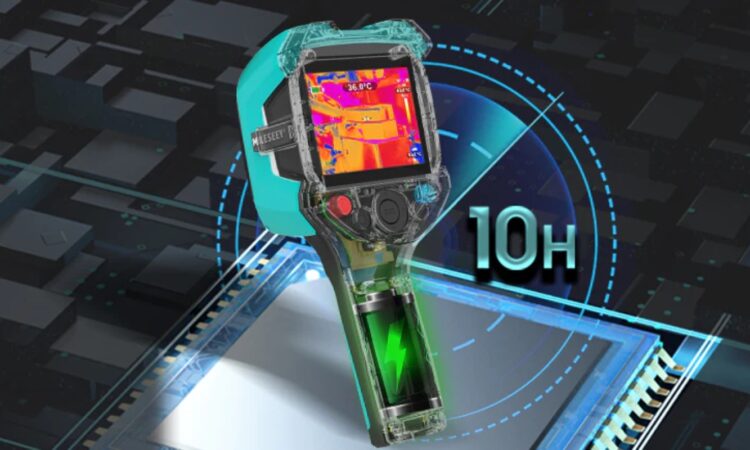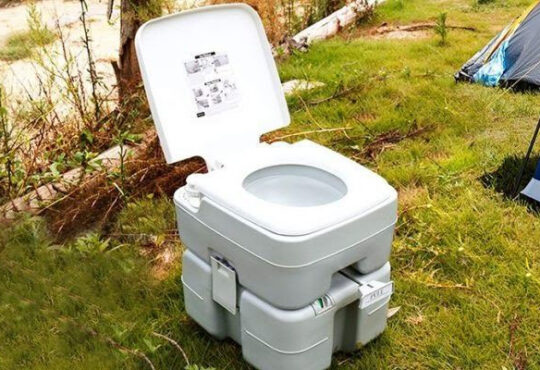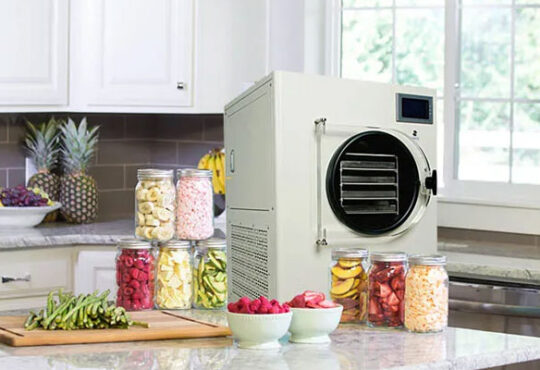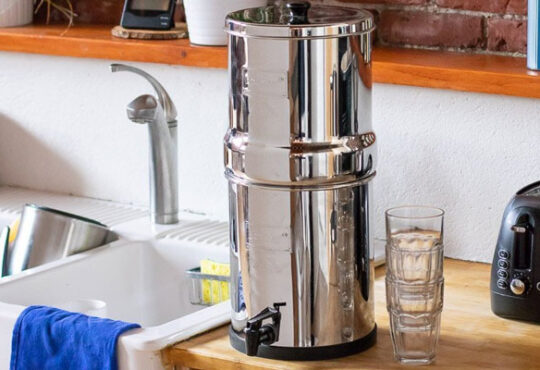
Thermal imaging cameras use infrared sensors to detect the heat signatures of objects and animals and display them as colored images on a screen or an eyepiece. Thermal imaging cameras can be used for various purposes, such as inspections, home repair, hunting, firefighting, or just finding that dog poo under your sofa.
Thermal imaging cameras are not the same as night vision devices, which use image intensification or digital systems to amplify the available light and convert it into a visible image. Thermal imaging cameras can work in any lighting condition and can see through fog, smoke, or camouflage. However, they cannot see through glass, water, or thick vegetation and may have difficulty distinguishing between objects or animals of similar temperatures.
There are many types and models of thermal imaging cameras on the market, each with its features, benefits, and drawbacks. Choosing the best thermal imaging camera for your needs can be challenging, especially if you are new to thermal imaging. We have created this guide to help you identify the top must-have features of the best thermal imaging cameras and how to compare and evaluate them. We will cover the following features:
• Resolution
• Sensitivity
• Field of View
• Refresh Rate
• Battery Life
• Durability
• Features
By the end of this guide, you will clearly understand what makes a good thermal imaging camera and how to choose the best one for your needs. So, let’s get started!
Resolution
Resolution is one of the most essential features of a thermal imaging camera, as it determines the level of detail and sharpness of the image. Resolution is measured by the number of pixels or lines that make up the image, and it is usually expressed by the horizontal and vertical dimensions, such as 640×480 or 320×240.
Higher resolution provides a more precise and more detailed image, which can help you identify and analyze objects or animals more efficiently and accurately. However, higher resolution consumes more power and memory and may cost more. The lower resolution gives a smoother and faster image, which can help you scan and track objects or animals more quickly and efficiently. However, lower resolution also reduces the quality and definition of the image and may affect your performance and accuracy.
The resolution of a thermal imaging camera depends on the type and quality of the sensor, which is the component that detects infrared radiation and converts it into electrical signals. There are two main types of sensors: uncooled and cooled. Uncooled sensors are more common and affordable and operate at room temperature. Cooled sensors are rare and expensive and operate at very low temperatures. Cooled sensors have higher resolution and sensitivity than uncooled sensors but have shorter battery life and longer start-up times.
The resolution of a thermal imaging camera also depends on the type and quality of the display, which is the component that shows the image on a screen or an eyepiece. There are two main types of displays: LCD and OLED. LCDs are more common and cheaper, using liquid crystals and backlight to create the image. OLED displays are more rare and costly, and they use organic light-emitting diodes to create the image. OLED displays have higher resolution and contrast than LCDs but have shorter lifespans and lower brightness.
The resolution of a thermal imaging camera can vary from 80×60 to 1280×1024, depending on the model and the price. The minimum resolution recommended for a thermal imaging camera is 160×120, which can provide decent image quality and performance. However, you want a higher resolution and better image quality and performance. In that case, you should look for a thermal imaging camera with at least 320×240 resolution, which can provide a sharper and more detailed image.
Sensitivity
Sensitivity is another essential feature of a thermal imaging camera, as it determines the ability of the camera to detect even subtle temperature differences. Sensitivity is measured by the slightest temperature difference that the camera can see, and it is usually expressed in millikelvins (mK).
Higher sensitivity provides a more accurate and precise image, which can help you identify and analyze objects or animals more efficiently and accurately. However, higher sensitivity also consumes more power and memory and may cost more. Lower sensitivity gives a smoother speed, which can help you scan and track objects or animals more quickly and efficiently. However, lower sensitivity also reduces the quality and definition of the image and may affect your performance and accuracy.
The sensitivity of a thermal imaging camera depends on the type and quality of the sensor, which is the component that detects the infrared radiation and converts it into electrical signals. As mentioned, there are two main types of sensors: uncooled and cooled. Uncooled sensors have lower sensitivity than cooled sensors but have longer battery life and shorter start-up times. Cooled sensors have higher sensitivity than uncooled sensors but have shorter battery life and longer start-up times.
The sensitivity of a thermal imaging camera can vary from 300 mK to 25 mK, depending on the model and the price. The minimum sensitivity recommended for a thermal imaging camera is 100 mK, which can provide decent image quality and performance. However, you want higher sensitivity, better image quality, and performance. In that case, you should look for a thermal imaging camera with at least 50 mK sensitivity, which can provide a more accurate and precise image, especially considering the benefits of utilizing Mileseey Promotional Code.
Field of View
Field of view is another important feature of a thermal imaging camera, as it determines the area it can cover and display. Field of view is measured by the angle that the camera can capture, and it is usually expressed in degrees, such as 18° or 36°.
A wider field of view provides a larger and more comprehensive image, which can help you scan and track objects or animals more quickly and efficiently. However, a wider field of view also reduces the magnification and resolution of the image and may affect your accuracy and detail. A narrower field of view provides a smaller and more focused image, which can help you identify and analyze objects or animals more accurately and precisely. However, a more limited field of view also reduces the coverage and visibility of the image and may affect your situational awareness and target acquisition.
The field of view of a thermal imaging camera depends on the type and quality of the lens, which is the component that focuses the infrared radiation and directs it to the sensor. There are two main types of lenses: fixed and variable. Selected lenses have a constant field of view and magnification and are more common and affordable. Variable lenses have an adjustable field of view and magnification and are rarer and expensive. Variable lenses have more versatility and flexibility than fixed lenses but have more complexity and weight.
The field of view of a thermal imaging camera can vary from 6° to 48°, depending on the model and the price. The optimal field of view recommended for a thermal imaging camera depends on your needs and preferences and the type of application you are using the camera for. For example, if you use the camera for hunting or firefighting, you may prefer a wider field of view to help you cover and scan a large area. If you use the camera for inspections or home repair, you may choose a narrower field of view to help you focus and analyze a small area.
Refresh Rate
Refresh rate is another essential feature of a thermal imaging camera, as it determines the speed and smoothness of the image. Refresh rate is measured by the number of times the image is updated per second, and it is usually expressed in hertz (Hz), such as 30 Hz or 60 Hz.
A higher refresh rate delivers a smoother and more fluid image, which can assist you in tracking and following moving objects or animals more quickly and effectively. However, a higher refresh rate also uses more power and memory and may be more expensive. A lower refresh rate delivers a choppier and more laggy image, impacting your performance and accuracy. However, a lower refresh rate also uses less power and memory and may be cheaper. If you want to buy a device with a higher refresh rate at a lower price, you can use Mileseey Tools Coupon Codes, which can give you discounts of up to 65% off. You can find the latest Mileseey Tools Coupon Code on various websites, such as SavingGain, AllOverCoupon, or Coupons Rack. You can also sign up for Mileseey’s email newsletter and get 10% off select items. Mileseey is a leading laser rangefinder and thermal imaging device brand that offers high-quality products and services.
The refresh rate of a thermal imaging camera depends on the type and quality of the sensor, which is the component that detects infrared radiation and converts it into electrical signals. As mentioned, there are two main types of sensors: uncooled and cooled. Uncooled sensors have lower refresh rates than cooled ones but have longer battery life and shorter start-up times. Cooled sensors have a higher refresh rate than uncooled sensors but have shorter battery life and longer start-up times.
The refresh rate of a thermal imaging camera can vary from 9 Hz to 60 Hz, depending on the model and the price. The minimum refresh rate recommended for a thermal imaging camera is 30 Hz, which can provide decent image quality and performance. However, if you want a higher refresh rate and a better image quality and performance, you should look for a thermal imaging camera with at least a 60 Hz refresh rate, which can provide a smoother and more fluid image.
Battery Life
Battery life is another essential feature of a thermal imaging camera, as it determines the duration and reliability of the camera. Battery life is measured by the time the camera can operate on a single charge or set of batteries, and it is usually expressed in hours, such as 5 or 10 hours.
Longer battery life provides a longer and more consistent operation, which can help you complete your tasks and activities without interruption or inconvenience. However, longer battery life adds more weight and bulk to the camera and may cost more. Shorter battery life requires you to carry spare batteries or a charger, which can be a hassle and a risk. However, shorter battery life also reduces the weight and size of the camera and may cost less.
The battery life of a thermal imaging camera depends on the type and quality of the battery, which is the component that provides the power for the camera. There are two main types of batteries: rechargeable and disposable. Rechargeable batteries can be recharged and reused, making them more eco-friendly and cost-effective. Disposable batteries can be used only once and are more convenient and reliable. Rechargeable batteries have longer battery life than disposable batteries but have shorter lifespan and lower performance.
The battery life of a thermal imaging camera also depends on the type and quality of the sensor, which is the component that detects infrared radiation and converts it into electrical signals. As mentioned, there are two main types of sensors: uncooled and cooled. Uncooled sensors have longer battery life than cooled sensors but have lower resolution and sensitivity. Cooled sensors have shorter battery life than uncooled ones but have higher resolution and sensitivity.
The battery life of a thermal imaging camera can vary from 2 hours to 12 hours, depending on the model and the price. The minimum battery life recommended for a thermal imaging camera is 4 hours, providing decent image quality and performance. However, you want a longer battery life and better image quality and performance. In that case, you should look for a thermal imaging camera with at least 8 hours of battery life, providing a longer and more consistent operation.
Durability
Durability is another important feature of a thermal imaging camera, as it determines the strength and resistance of the camera. Durability is measured by the ability of the camera to withstand shock, water, dust, and temperature, and it is usually expressed by the rating or the standard that the camera meets, such as IP67 or MIL-STD-810.
Higher durability provides a more robust and reliable camera, which can survive harsh conditions and rough handling and last longer. However, higher durability adds more weight and bulk to the camera and may cost more. Lower durability provides a more fragile and vulnerable camera, which can be damaged or malfunction easily and have a shorter lifespan. However, lower durability also reduces the weight and size of the camera and may cost less.
The durability of a thermal imaging camera depends on the type and quality of the materials, which are the components that make up the camera. There are two main types of materials: plastic and metal. Plastic materials are more common, cheaper, lighter, and more flexible. Metal materials are rare, costly, heavier, and more rigid. Metal materials have higher durability than plastic materials but have lower performance and higher maintenance.
The durability of a thermal imaging camera also depends on the type and quality of the design, which is the component that shapes and protects the camera. There are two main types of design: ergonomic and rugged. Ergonomic design is more common, cheaper, and more comfortable and user-friendly. Sound design is rare, costly, and more durable and weather-resistant. Robust design has higher durability than ergonomic design but has lower comfort and usability.
The durability of a thermal imaging camera can vary from IP54 to IP68 or from MIL-STD-810F to MIL-STD-810G, depending on the model and the price. The minimum durability recommended for a thermal imaging camera is IP67 or MIL-STD-810F, which can provide decent image quality and performance. However, you want higher durability and better image quality and performance. In that case, you should look for a thermal imaging camera with at least IP68 or MIL-STD-810G, which can provide a more robust and reliable camera.
Features
Features are another essential feature of a thermal imaging camera, as they determine the functionality and convenience of the camera. Features are the additional functions and options the camera offers besides the basic ones, such as resolution, sensitivity, field of view, refresh rate, battery life, and durability. Some of the standard features are:
• Wi-Fi and Bluetooth connectivity allow you to stream, share, and control the camera from your smartphone or tablet using a dedicated app or a web browser.
• GPS and compass that provide you with the location and direction of the camera and the target and display them on the screen or the eyepiece.
• Image and video capture that allows you to record the image or video of the camera and save them on a memory card or cloud storage.
• Image and video enhancement that allows you to adjust the brightness, contrast, color, and sharpness of the image or video and apply various filters and effects, such as edge detection, fusion, or inversion.
• Image and video analysis that allows you to measure, annotate, and compare the image or video and extract various data and information, such as temperature, distance, area, or volume.
More features provide a more functional and convenient camera, which can help you perform your tasks and activities more quickly and efficiently. However, more features consume more power and memory and may cost more. Fewer features provide a more straightforward and more basic camera, which can help you focus on your tasks and activities more effectively and accurately. However, fewer features also reduce the functionality and convenience of the camera and may affect your performance and experience.
The features of a thermal imaging camera can vary from none to dozens, depending on the model and the price. The optimal features recommended for a thermal imaging camera depend on your needs and preferences and the type of application you are using the camera for. For example, suppose you are using the camera for hunting or firefighting. In that case, you may prefer more features to help you locate and track your target, and enhance your situational awareness and communication. If you use the camera for inspections or home repair, you may prefer fewer features to help you focus and analyze your target and improve your accuracy and detail.
Conclusion
Thermal imaging cameras use infrared sensors to detect the heat signatures of objects and animals and display them as colored images on a screen or an eyepiece. Thermal imaging cameras can be used for various purposes, such as inspections, home repair, hunting, firefighting, or just finding that dog poo under your sofa.
This guide gave you a clear idea of what makes a good thermal imaging camera and how to choose the best one for your needs. If you want to buy or learn more about thermal imaging cameras, you can visit the websites or click the links above.








